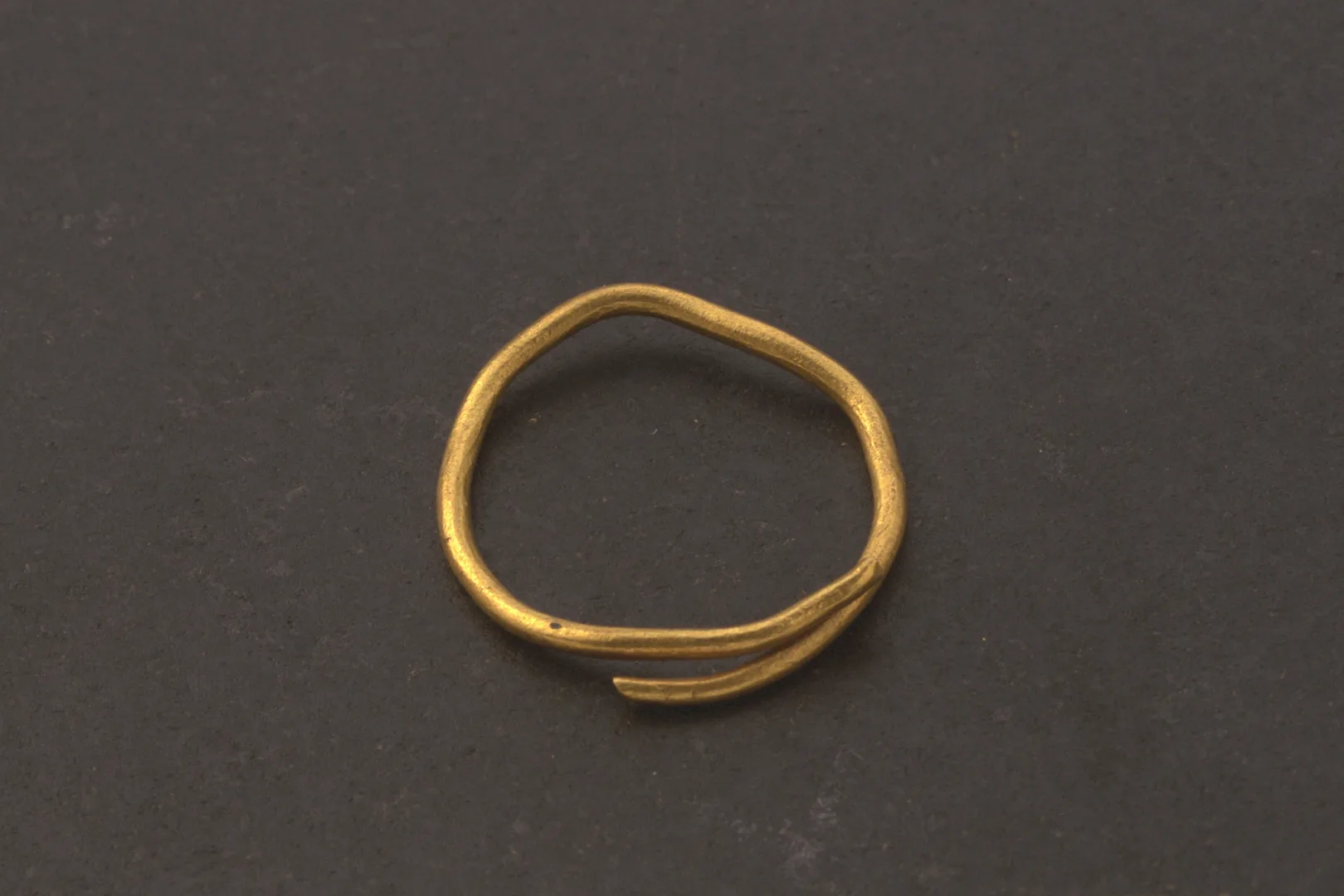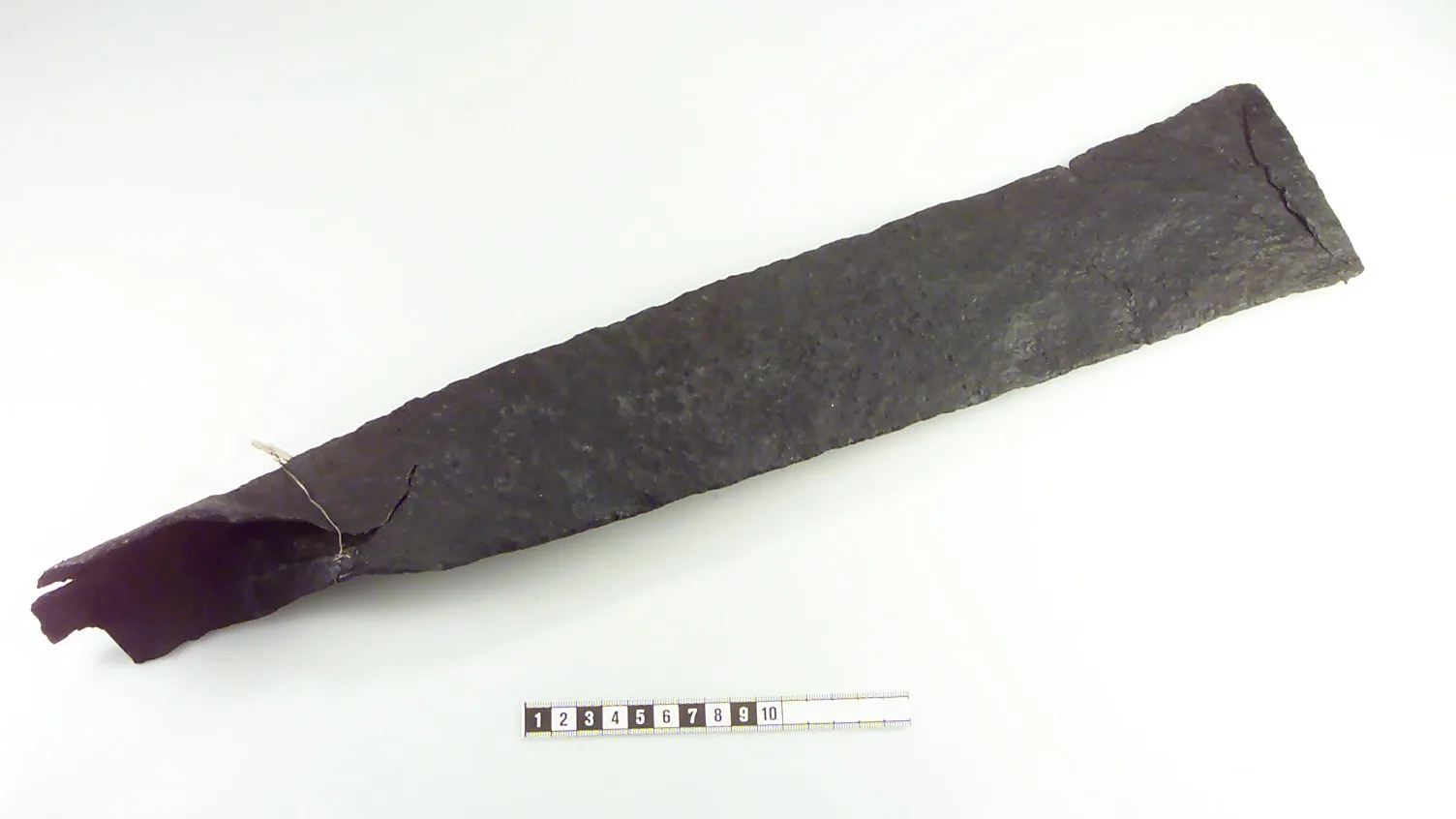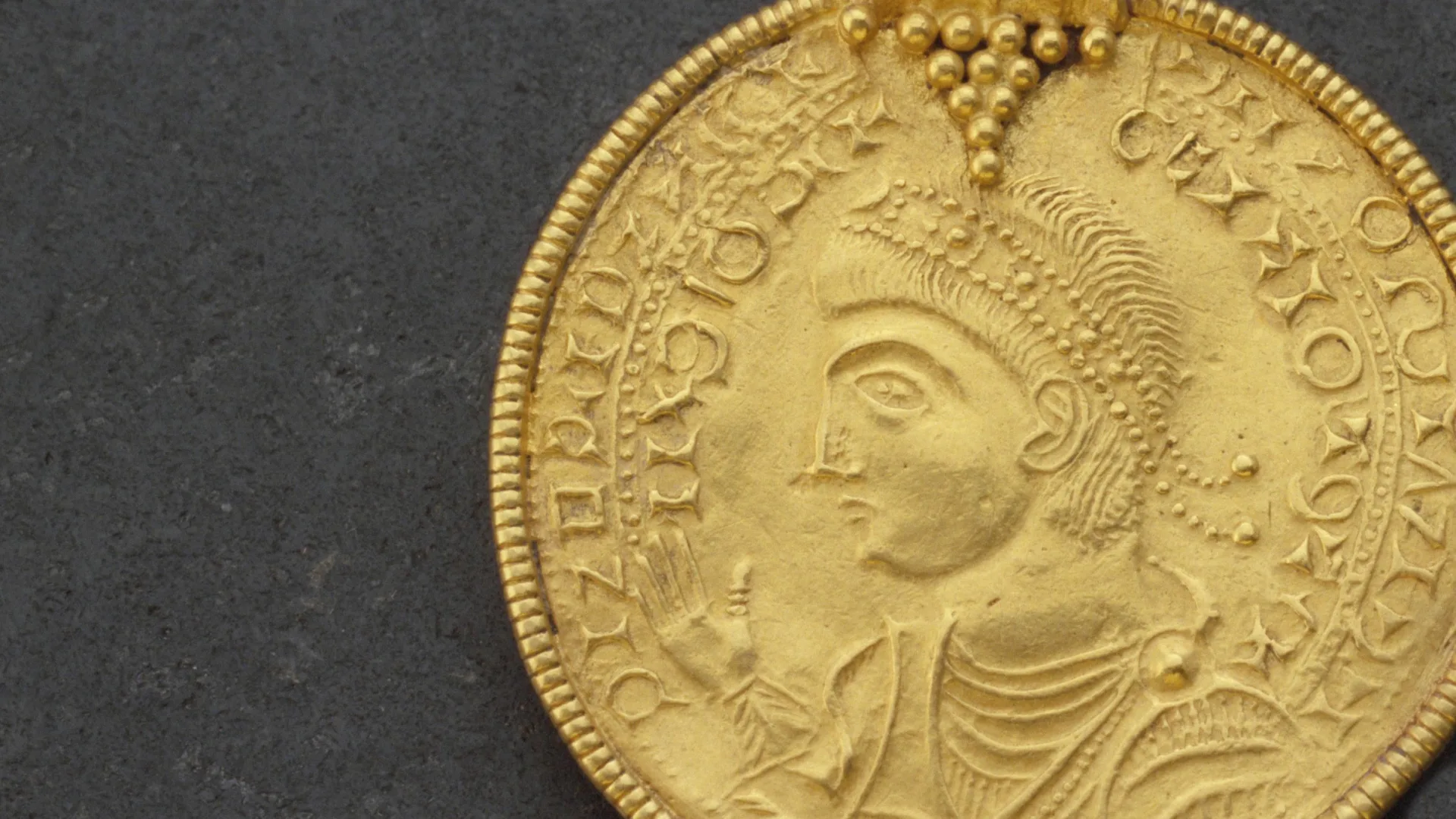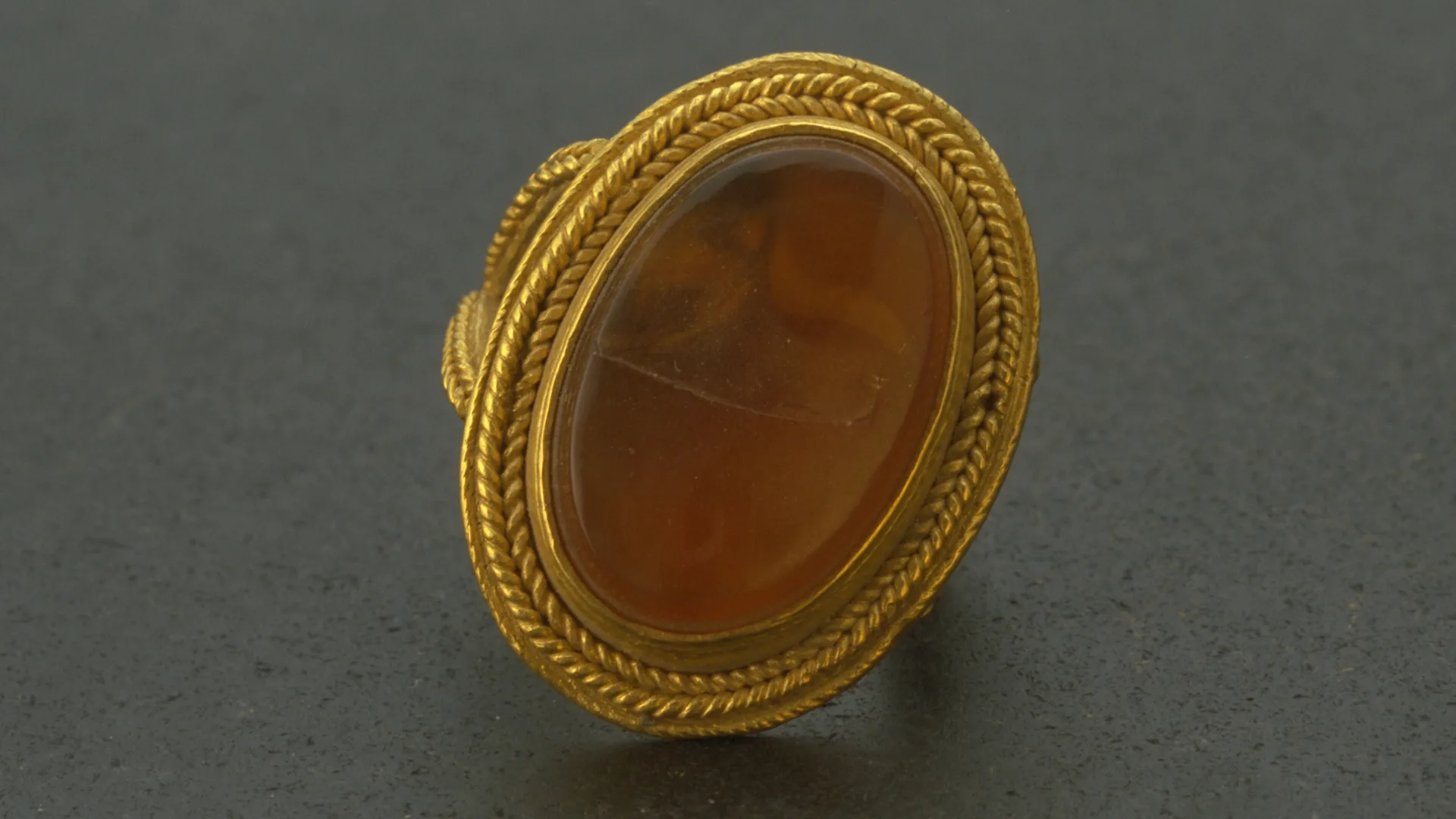A spiral-wound rod
Bronze Age
1700 BC – 500 BC
Iron Age
500 BC – AD 1100
Viking Age
AD 800 – AD 1100
Between 1976 and 1983, the University of Umeå conducted archaeological excavations at Trogsta, in Hälsingland. There, they uncovered the remains of a northern Swedish farmstead with associated burial grounds dating to the Migration Period, a time when gold was relatively common in Scandinavia.
On man-made terraces stood large houses, some as long as 38 metres and 10 metres wide, divided into several rooms with clay-daubed walls. The finds show evidence of grain cultivation, weaving, and leaf-cutting to provide fodder for stalled livestock.
Wealthy farmers and their wives were buried around these houses. When the houses were eventually abandoned, graves were placed directly onto the house foundations, marking the continued significance of the household even in death.





